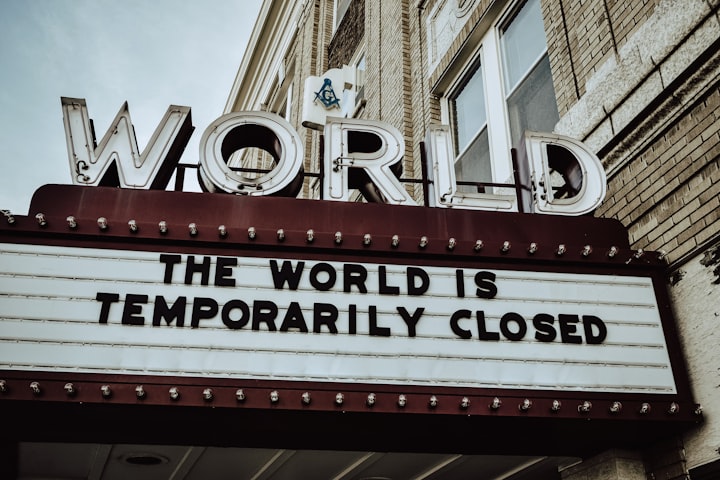15 Numbers That Show How the COVID-19 Pandemic Has Changed Our Lives
We are living in the second year of the COVID-19 pandemic. While essential jobs are sustained under the strictly difficult conditions, most of labour force is coming to terms with severe changes in lives.

The first case of coronavirus was traced back to November 17th 2019 in Wuhan (China), and there were nearly 148.000 cases around the globe in March 2020. The World did not need a significant time to realise its whirlwind spread, and the consequences. People around the globe soon got adapted to the current state of life, even when it means a life in pause.
Remote working, teaching, learning and spending leisure time at home became a profound phenomenon. Yet, it is not the only contour in this context. Although numbers themselves do not tell the whole stories, the following data highlights the changes in our lives caused by the pandemic.
Perception of Time
1. Puzzle purchases increased three times in 2020 according to the Puzzle Warehouse. This means puzzles are looked upon with favours by many people in their leisure time.
2. 13.5 hours spent on looking at screens by the average adult, recorded in March 2020. This number increased by 3 hours 20 minutes from 2019.
3. 77% of children whose ages range from 5-12 spent four hours at least on the devices in August 2020, compared to 35% in the previous year.
4. E-books and audio-book checkouts in Libby, a public-library app, increased by respectively 51% and 23%. At OverDrive, e-book loans have rocketed 53% on average by the middle of March 2020.

Well-being
5. Handwashing with soaps and clean water is out of reach for many people. 1.6 billion people or 22% of world population have facilities lacking soap or water while 1.4 billion people or 18% of world population do not have any facilities.
6. Children's learning is hindered by the lack of access to digital technologies. Online learning has been deployed in the context of COVID-19, however, less than half of households around the world have access to internet. Only 38% of rural households have televisions in their possession while this number in urban households is 73%.
7. 78.9% of children whose ages range from 1-14 experienced psychological aggression and physical punishment at home by caregivers in April 2020. Additionally, 18% of women and girls from 15-49 experienced physical and sexual violence.

Employment and Social Issues
8. 8.8 percent of global working hours disappeared in the first quarter of 2020. This made up to 255 million full-time jobs which is four times greater than the job losses during the 2009 financial crisis. Impacts on the global employment is unprecedent ed and severe.
9. 40-60 million people were pushed into the extreme poverty. The world’s population living on less than $1.90 per day increase from 8.2% in 2019 to 8.6% in 2020, or from 632 million people to 665 million people. More than 100 million people living on less than $3.20-$5.50 will be confronting the poverty.
10. Racism, stigma and xenphobia against certain national and ethnic groups has been significantly outlined during the pandemic time. The risk of accentuation of existing patterns of discrimination is real. 100 countries declared the states of emergency and emergency measures, however, only 13 countries have undertaken them.

Economic trends
11. Edtech or education technology has distinctively emerged as the most viable tool in the education. Before COVID-19, the education technology had been largely adopted within $18.66 billion global investment in 2019. At Coursera, the company recorded 650% usage growth globally and over 1,400% in India in a period of six months during the pandemic.
12. E-commerce has increased from 14% in 2019 to 19% in 2020 in the share of the global retail trade. The online retail sales spurred remarkably in several countries. At Republic of Korea, the number of highest share of 25.9% was recorded in 2020, which was increased by approximately 5.1% from the previous year.
13. Telehealth is explosively adopted. In 2019, only 11% consumers choosing telehealth. This rocketed up to 46% in April 2020. Additionally, the greater part of medical services suppliers that joined the poll demonstrated higher solace with this type of healthcare delivery.
14. Online food delivery undeniably became a rescuer for the restaurant industry following the broad closures and strict restrictions. Food delivery rose 15% recorded in April 2020. Takeaway services such as Just Eat, Deliveroo and Uber Eats indicated an increasing of 21%.
15. Telecommunication such as Zoom has created a firm stand in abudant activities, including learning, working and partying. In the second quarter of 2020, this video-conferencing company recorded $663.5 million in revenue which was expected at $500 million by Wall Street analysts. Profit surged $185.7 million from $5.5 million in the same quarter in 2019.
Sources:
- NPR 2020. Zoom Turns Record Profit Thanks To Coronavirus Shutdowns.
- Talking Retail 2020. Food delivery surges in popularity during lockdown.
- The Committee for the Coordination of Statistical Activities 2020. How COVID-19 is changing the world: a statistical perspective.
- Time 2021. These 29 Numbers Show How the COVID-19 Pandemic Changed Our Lives Over the Last Year.
- Unicef 2020. How COVID-19 is changing the world.
- UNCTAD 2021. Global e-commerce jumps to $26.7 trillion, COVID-19 boosts online sales.
- World Economic Forum 2020. The COVID-19 pandemic has changed education forever. This is how.
- World Economic Forum 2020. Industry innovation: How has COVID-19 changed global healthcare?
About the Creator
Thu Vo
Currently International Project Officer at Design Centre MUOVA (Finland). I have been immerged in different kinds of development projects. Writing is my leisure activity, with which I hope to connect with the wider public around the world!






Comments
There are no comments for this story
Be the first to respond and start the conversation.